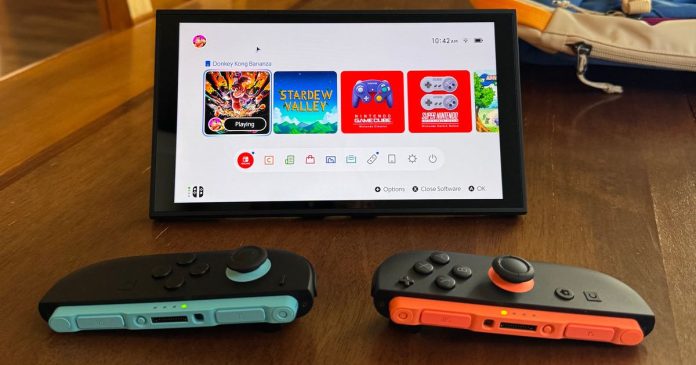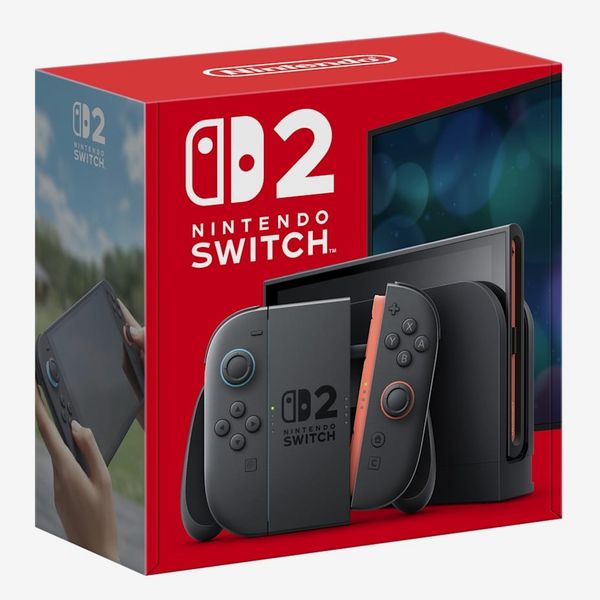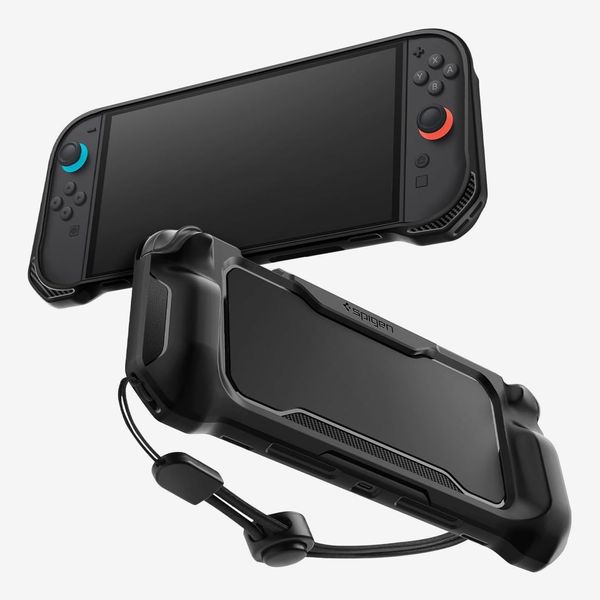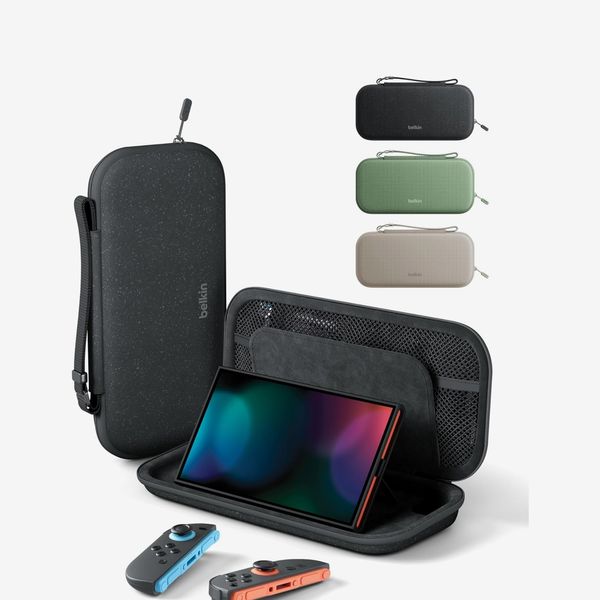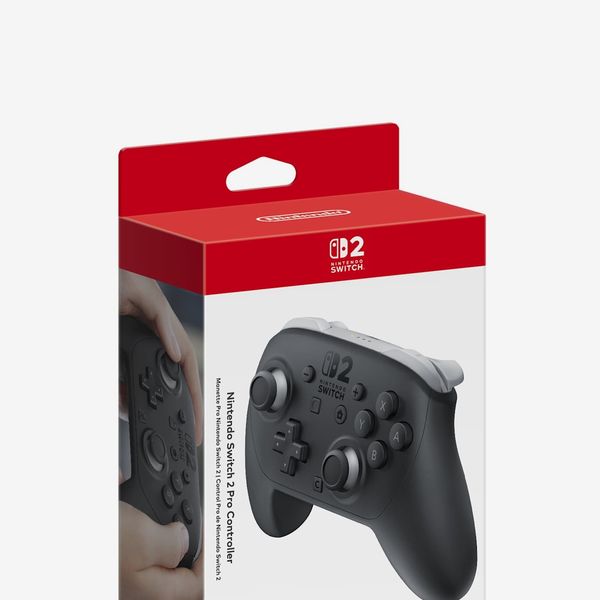By Jordan McMahon, a technology and gadgets writer at the Strategist. He’s been covering technology since 2017 and previously wrote for Wired, Wirecutter, and Reviewed.com.
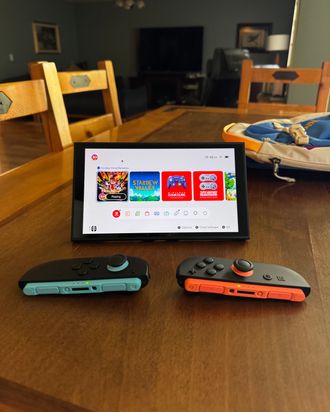
I’ve had my Nintendo Switch since it launched in 2017, which is a long time to hang on to a console, especially for something I’ve used as my main gaming device. It had started feeling a little stale and antiquated in comparison with the other handheld gaming consoles I’d been testing. But it was also the only way to play Nintendo games like Advance Wars 1+2 Reboot Camp and The Legend of Zelda: Tears of the Kingdom. I’ve been eagerly awaiting the Switch 2 since rumors started surfacing a year or two ago, and it finally arrived in June of this year. Since I started testing the Switch 2, I haven’t been able to put it down.
New! You can now save this product for later.
At first glance, the Switch 2 looks quite a bit like its predecessor. It has a nearly eight-inch screen surrounded on both sides by removable controllers, with a kickstand on the back and an included dock to play on your TV. After so many years with the Switch, which began to feel both stale and slow compared to other handhelds I’ve tested, the Switch 2 is sleeker, sturdier, and faster than the original.
The Switch 2’s kickstand is stronger than the original’s, and it can be used at nearly any viewing angle. Photo: Jordan McMahon
The Switch 2’s display is over an inch larger than the original’s and, like many of the current class of gaming consoles, has 1080p resolution (it’s capable of outputting 4K when connected to a TV) and 120Hz refresh rate — the OLED Switch had 720p and 60Hz. That larger display means the Switch 2 takes up more space in a bag or on a table than the original, but it’s still light enough to carry without adding significant heft. Unlike the OLED version of the Switch, the Switch 2 has an LCD display that, while crisp and vibrant, doesn’t produce true blacks or the same level of contrast that OLED displays do. That said, the bright, shimmery colors of Donkey Kong Bananza looked excellent on it.
Nintendo has also done a lot of work to improve the Joy-Cons on the Switch 2. The buttons are more comfortable to press (though they’re still small compared to those on a PlayStation 5 or Steam Deck), and the new magnetic attachment method makes it easier to remove the controllers. While I’m disappointed that Nintendo ditched the playful colors of the original Joy-Cons for plain black, I’m a fan of the new controllers overall and their improvements in comfort; here’s hoping they don’t suffer from Joy-Con Drift in the future.
Despite weighing a bit more than the original Switch — at 1.18 pounds, it’s about half a pound heavier — the Switch 2 isn’t much more strenuous to hold for long stretches. In addition, the built-in kickstand feels less flimsy than its predecessor’s and can be used at multiple angles, making it more convenient and comfortable to use in a wider variety of situations. The Switch 2 also has an additional USB-C port, which means you can have it plugged into both a power source (like a portable charger) and another video source like your TV or a webcam (Nintendo sells one, and the Switch 2 works with third-party options as well).
While it’s neat that you can use a Joy-Con as a mouse, it doesn’t work in every game, and the controller isn’t ergonomic enough to use for long stretches of time. Photo: Jordan McMahon
When the Switch came out in 2017, nothing else looked quite like it. Eight years later, that’s no longer the case. Windows-powered handheld consoles like the ASUS ROG Ally X, the Valve Steam Deck, and Android-powered cloud gaming consoles such as Logitech’s G Cloud all have similar designs with more support for third-party games. What they don’t have — at least not in any totally legal way — is access to Nintendo’s wide catalogue of first-party games.
With the Switch 2, so far there’s Mario Kart World, which introduces some open-world elements into the company’s flagship racing series, and Donkey Kong Bananza, in which you can run around various levels, like a dessert-themed world, and punch your way through obstacles. World is a great iteration of Mario Kart, but Bananza is the one I’d recommend everyone get with the Switch 2; it feels like a rage room built inside a spa. Both showcase the strengths of Nintendo’s games: They create immersive worlds you’re excited to jump back into every time you pick up your Switch.
Beyond that, it works with original Switch games, too, though Switch 2 games won’t work on the original Switch. There’s even a new feature called Virtual Game Cards, which allows you to transfer game data between devices. To do this, you need to have both Switches nearby to link them, but after that, you can just download the games from the Nintendo store, and it’ll ask you if you’d like to start fresh or load previously saved data. I used it to bring my Stardew Valley farm to the Switch 2, and it worked without a hitch.
Donkey Kong Bananza is one of two exclusives to the Switch 2 right now, and it’s a delight. Photo: Jordan McMahon
The best part of the Switch 2’s game library thus far, though, is its access to old-school Nintendo games. As long as you have a Switch Online subscription, you can play original Game Boy, NES, SNES, and GameCube games right on the Switch 2. The selection is somewhat limited, but the available options are quite good. On the GameCube side there’s Legend of Zelda: The Windwaker, Super Mario Strikers, and Soul Calibur II. For SNES fans, you can get Super Mario World, Super Metroid, The Legend of Zelda: A Link to the Past, and a ton of other classic titles.
When playing games, you can expect anywhere from two to three and a half hours of battery life. Nintendo says you can get up to six hours, but that hasn’t been true in my experience. I managed to get a little over three hours of battery life while playing Stardew Valley while the Switch 2 barely made it over two hours when playing Mario Kart World.
One particularly neat new Joy-Con capability is that you can turn them into a mouse. When you place one down on a table with the connector portion touching the table, a cursor will pop up on your Switch 2’s screen. I would call it more of a party trick than an actual feature, however: It doesn’t work with every game, and even when it does work, it’s not something I’d use regularly, as the shape of the Joy-Con doesn’t provide a comfortable place to rest your hand while you use it.
About the Joy-Con ergonomics: There isn’t anywhere to rest your bottom three fingers while playing, which means they end up bunched up or extended out — either feels awkward. Other handheld consoles like the ROG Ally X and Steam Deck have controller-like grips on each side, and I wish Nintendo had done something similar here to make the Switch 2 as comfortable to hold as the competition.
There’s also a new button dedicated to chatting on Nintendo’s online service. When pressed, you can start a chat with your friends, but you’ll need a Nintendo Switch Online subscription for it to work. If you don’t have that subscription, the button doesn’t do anything, which is a bummer; I wish there were an option to remap the button to another system function.
The Switch 2 isn’t a major reimagining of the original; it feels like an incremental upgrade. That said, all those upgrades are meaningful: It’s faster, it’s more considered, and its launch titles are worthwhile for longtime Nintendo fans. Thanks to its much more powerful internals, it’s capable of running resource-intense games like Final Fantasy VII Rebirth and Cyberpunk 2077 that the original Switch couldn’t. But it’s still a Switch, and most of the games you can play on it still work on the old Switch, so if none of the new games excite you, it might be best to wait for more games to arrive before upgrading. But if you want to dive into the latest worlds Nintendo’s cooked up, or if you just want a Switch with nicer hardware and more longevity, you won’t regret getting this one.
The Strategist is designed to surface useful, expert recommendations for things to buy across the vast e-commerce landscape. Every product is independently selected by our team of editors, whom you can read about here. We update links when possible, but note that deals can expire and all prices are subject to change.
The Nintendo Switch 2 Is Definitely Worth the Upgrade
